From Theory to Action: Your Guide to DevOps Principles, How-tos, and Realistic Scenarios
DevOps has become a transformational paradigm in the quickly changing fields of software development and IT operations, bridging the gap between these two hitherto isolated disciplines. DevOps, short for Development and Operations, is a potent method that simplifies procedures, improves teamwork, and hastens the delivery of products. We will explore the core ideas of DevOps in this extensive tutorial, as well as its actual implementation and real-world applications. This manual will give you the information and resources you need to confidently navigate the DevOps landscape, regardless of your level of experience.
Section 1: Understanding DevOps Principles
A critical component of adopting this technique for streamlining software development and IT operations is “Understanding DevOps Principles.” DevOps is a mindset that stresses cooperation, automation, and continuous improvement rather than merely a collection of technologies. Understanding DevOps’ fundamental tenets lays the groundwork for a successful deployment that promotes effectiveness, creativity, and dependability.
Collaboration: DevOps breaks down the traditional barriers between development and operations teams. It promotes a collaborative environment where cross-functional teams work together to achieve common goals. This collaboration leads to improved communication, faster feedback loops, and better alignment with business objectives.
Automation: Automation is at the heart of DevOps. By automating manual and repetitive tasks, teams can reduce human errors, increase efficiency, and accelerate the software delivery process. Automated testing, deployment, and monitoring ensure consistent and reliable outcomes.
Continuous Integration (CI): CI involves integrating code changes into a shared repository multiple times a day. Each integration is automatically verified through automated testing, ensuring that new code does not disrupt existing functionality. This practice minimizes integration challenges and identifies issues early in the development cycle.
Continuous Delivery (CD): CD extends CI by automating the deployment process. Once code passes through CI testing, it can be automatically deployed to production or staging environments. CD ensures that code changes are always in a deployable state, reducing the time between development and delivery.
Feedback and Continuous Improvement: DevOps thrives on feedback loops. Regularly gathering feedback from users, stakeholders, and monitoring systems helps identify areas for improvement. By acting on this feedback, teams can iterate and enhance their processes, products, and services.
Infrastructure as Code (IaC): Treating infrastructure as code allows teams to manage and provision resources using code and automation. This practice makes infrastructure reproducible, version-controlled, and easily scalable, enhancing consistency and reducing configuration drift.
Monitoring and Observability: Monitoring tools provide insights into the health and performance of applications and infrastructure. Observability goes a step further, enabling teams to understand the internal behavior of systems. Proactive monitoring and observability ensure that issues are detected and resolved before they impact users.
DevOps Culture: Beyond technical practices, DevOps fosters a cultural shift. Collaboration, transparency, and shared ownership are valued over blame and siloed thinking. A DevOps culture encourages learning, experimentation, and continuous learning.
Section 2: The How-tos of Implementing DevOps
“The How-tos of Implementing DevOps” is a practical journey that takes you from theory to action, empowering you to bring the principles of DevOps to life within your organization. Here’s a step-by-step guide to help you navigate the intricacies of implementing DevOps successfully:
1. Assess Your Current State: Begin by evaluating your organization’s existing development and operations processes. Identify bottlenecks, pain points, and areas where collaboration is lacking. This assessment serves as a baseline for measuring the impact of your DevOps implementation.
2. Define Clear Objectives: Set specific goals for your DevOps implementation. Whether it’s improving release frequency, reducing deployment failures, or enhancing cross-team collaboration, clear objectives provide direction and focus.
3. Build Cross-Functional Teams: DevOps thrives on collaboration. Form cross-functional teams that consist of developers, operations personnel, quality assurance experts, and other stakeholders. Encourage open communication and shared responsibility.
4. Automate Manual Processes: Identify manual tasks that can be automated to streamline your workflow. This includes automated testing, deployment, provisioning of infrastructure, and more. Automation reduces errors, speeds up processes, and ensures consistency.
5. Implement Continuous Integration (CI): Adopt a CI practice where code changes are integrated frequently into a shared repository. Automated tests should run on each integration to catch bugs early. This process promotes code quality and prevents integration issues.
6. Embrace Continuous Delivery (CD): Extend CI to include CD, automating the deployment process. Once code passes CI tests, it’s automatically deployed to various environments. This practice ensures that your code is always in a deployable state.
7. Choose the Right Tools: Select tools that align with your DevOps goals. Version control systems, build automation tools, configuration management tools, and monitoring solutions are essential components of your DevOps toolbox.
8. Implement Infrastructure as Code (IaC): Treat your infrastructure as code, allowing you to provision and manage resources through scripts. IaC promotes consistency, scalability, and reduces the risk of configuration drift.
9. Foster a DevOps Culture: Cultural change is integral to successful DevOps adoption. Encourage a culture of collaboration, ownership, and continuous learning. Celebrate failures as opportunities for growth and improvement.
10. Start Small and Iterate: Begin with a pilot project or a smaller application to implement DevOps practices. Learn from the experience, gather feedback, and refine your processes. Iterative improvements drive continuous enhancement.
11. Monitor and Measure: Implement monitoring and observability practices to track the performance of your applications and infrastructure. Collect metrics and use them to identify areas for optimization.
12. Encourage Feedback and Learning: Create mechanisms for gathering feedback from users, stakeholders, and team members. Use feedback to identify areas for improvement and drive iterative enhancements.
13. Scale Gradually: As you gain experience and success with DevOps in smaller projects, scale your implementation to larger applications and teams. Address challenges that arise as you expand.
14. Continuous Improvement: DevOps is a journey, not a destination. Continuously assess your processes, tools, and practices. Embrace a mindset of continuous improvement to ensure long-term success.
Incorporating these “how-tos” into your DevOps implementation plan will help you realize the benefits of improved collaboration, faster release cycles, and enhanced software quality. Remember that DevOps is about iterative progress, so adapt and refine your approach as you learn and grow.
Section 3: Realistic Scenarios and Case Studies
“Realistic Scenarios and Case Studies” shed light on how DevOps principles translate into tangible benefits across different industries and organizations. By examining these real-world examples, you’ll gain insight into the transformative power of DevOps and how it can address specific challenges and drive innovation.
1. E-Commerce Success Story:
Imagine an e-commerce company struggling with frequent website crashes during high-traffic periods. By implementing DevOps practices, including continuous monitoring, automated scaling, and fast deployments, the company manages to handle spikes in traffic seamlessly. As a result, they not only improve user experience but also boost sales and customer satisfaction.
2. Financial Services Transformation:
In the world of financial services, compliance and security are paramount. A bank adopts DevOps to modernize its legacy systems while maintaining regulatory compliance. By automating security checks, they ensure faster and secure deployments. This case demonstrates how DevOps can bridge the gap between innovation and stringent regulations.
3. Healthcare Innovation:
A healthcare organization aims to accelerate its software development to improve patient care. With DevOps, they implement continuous testing and deployment for a patient monitoring application. The result is faster delivery of updates and features that enhance patient outcomes. This scenario showcases how DevOps can drive innovation even in highly regulated sectors.
4. Gaming Industry Agility:
A game development studio embraces DevOps to enhance game development and updates. By automating the build and deployment processes, they reduce release cycles from weeks to days. This agility enables them to respond to player feedback quickly and deliver new content, keeping gamers engaged and loyal.
5. Travel and Hospitality Success:
A travel booking platform leverages DevOps to provide a seamless booking experience. Through automation, they reduce errors in booking processes and enhance their application’s reliability. As a result, customer complaints decrease, and the platform gains a competitive edge in the market.
6. Technology Startup Scalability:
A technology startup experiences rapid growth but struggles with scaling their infrastructure. By adopting DevOps practices, they implement auto-scaling, manage resources through code, and automate deployments. This enables them to handle increased user demand efficiently, without compromising on performance.
7. Communication Service Reliability:
A communication service provider faces challenges with downtime and service disruptions. DevOps principles are introduced, leading to automated monitoring, alerting, and rapid incident response. The result is improved service reliability, minimized downtime, and increased customer trust.
8. Public Sector Efficiency:
A government agency implements DevOps to enhance the efficiency of citizen-facing services. By automating processes and embracing a culture of collaboration, they streamline service delivery, reduce manual work, and provide citizens with faster and more responsive support.
These real-world scenarios and case studies illustrate the diverse applications of DevOps across various industries. They showcase how DevOps principles, when implemented strategically, can lead to tangible improvements in efficiency, reliability, customer satisfaction, and innovation. By learning from these examples, you can glean insights to tailor DevOps practices to your organization’s unique challenges and goals.
Section 4: Overcoming Challenges and Scaling DevOps
“Overcoming Challenges and Scaling DevOps” delves into the complexities organizations face when adopting and expanding their DevOps practices. While DevOps offers numerous benefits, challenges inevitably arise, particularly when aiming to scale the methodology. Here’s how to address common hurdles and ensure a smooth, successful DevOps journey:
1. Cultural Resistance: DevOps requires a cultural shift, which can meet resistance from teams accustomed to traditional workflows. To overcome this, foster a culture of collaboration, open communication, and shared ownership. Encourage cross-functional teams to break down silos and build trust.
2. Tool Selection and Integration: With a plethora of DevOps tools available, selecting the right ones can be daunting. Choose tools that align with your organization’s needs and integrate seamlessly. Focus on tools that enhance automation, collaboration, and visibility across teams.
3. Complexity in Legacy Systems: Legacy systems can impede the adoption of DevOps practices due to their inflexibility and lack of automation capabilities. Implement strategies for gradually modernizing legacy systems, such as introducing microservices or encapsulating them within containers.
4. Security and Compliance: As DevOps accelerates the development process, security and compliance can become concerns. Implement security practices early in the development cycle, automate security testing, and ensure that compliance requirements are met through documentation and testing.
5. Scalability Challenges: Scaling DevOps from small projects to larger applications and teams can present scalability challenges. Implement infrastructure as code (IaC) practices to automate provisioning and scaling of resources. Focus on monitoring and observability to identify and address bottlenecks as you scale.
6. Resistance to Change: People are naturally resistant to change, and DevOps represents a significant change in processes and workflows. Provide training, education, and clear communication about the benefits of DevOps to mitigate resistance and gain buy-in from team members.
7. Lack of Metrics and Visibility: Without proper monitoring and metrics, it’s challenging to track progress and identify areas for improvement. Implement comprehensive monitoring and observability tools to gain insights into performance, user behavior, and application health.
8. Maintaining Consistency: With frequent deployments, maintaining consistency across environments can be challenging. Adopt practices like version control, configuration management, and automated testing to ensure consistency in all stages of development and deployment.
9. Organizational Structure: Traditional organizational structures may not align with DevOps principles. Consider adopting a DevOps-oriented structure that encourages cross-functional collaboration, shared responsibilities, and direct communication channels.
10. Continuous Learning: DevOps is an ever-evolving field. Encourage a culture of continuous learning and improvement. Provide opportunities for skill development, attend conferences, and stay updated on industry trends and best practices.
Conclusion
In the realm of software development, adopting DevOps is not merely a choice—it’s become an essential requirement for maintaining competitiveness and responsiveness to the demands of the market. From grasping the foundational principles to executing them through hands-on techniques, this guide has laid out a comprehensive roadmap for navigating the intricate landscape of DevOps. Through nurturing collaboration, embracing the power of automation, and consistently enhancing workflows, you have the opportunity to fully unlock the potential of DevOps and catalyze innovation within your organization.
Are you prepared to embark on your voyage into the world of DevOps? We eagerly await your thoughts, experiences, and questions. Please don’t hesitate to leave a comment below and join the ongoing discourse!
We extend an invitation to you to share your reflections, experiences, and inquiries concerning DevOps. Have you already instated DevOps principles within your organizational framework? What hurdles did you encounter, and how did you surmount them? Your insights hold the potential to motivate and steer others on their own transformative DevOps expedition. Become a part of the conversation!




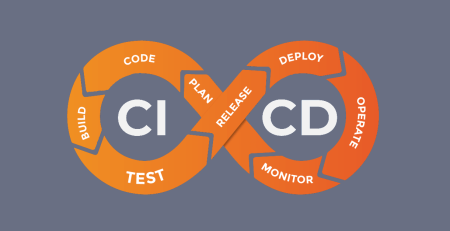

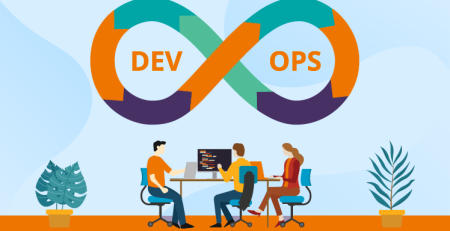

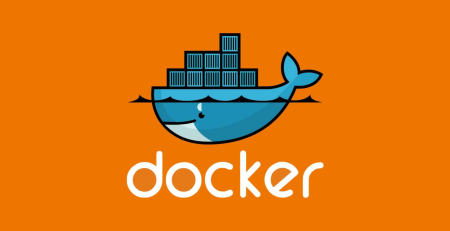

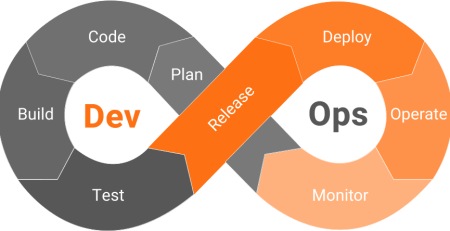

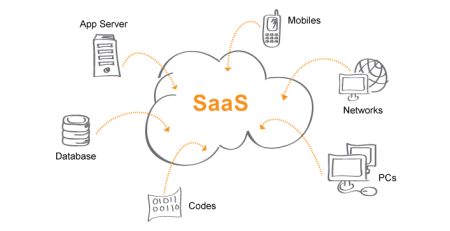
Leave a Reply